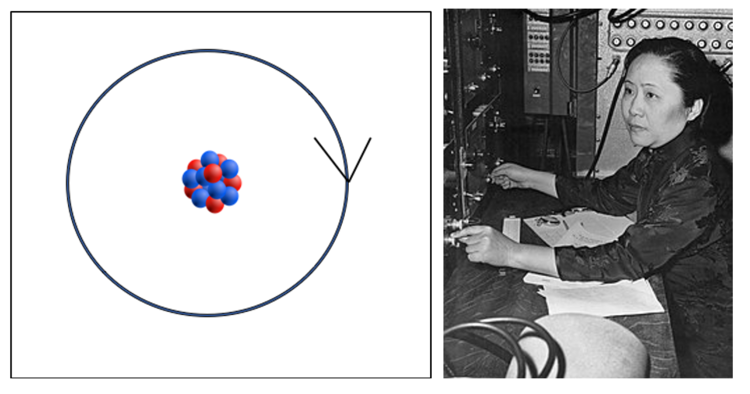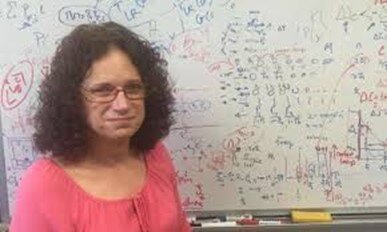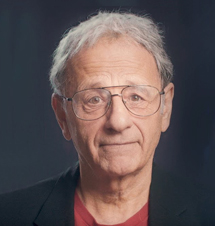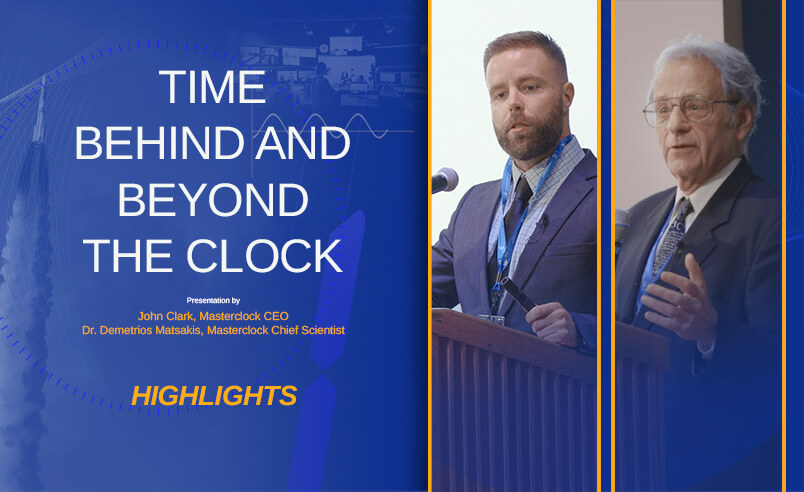A few weeks ago, there was much media attention paid to an experiment to test if the laws of physics were the same going forward or backward. Anyone who looks in a mirror would never guess this kind of time symmetry is even a possibility. For example, if you watch a movie, you can immediately tell if it is being played backward. Even the fictional Benjamin Button went forward in time while his body got more youthful.
By Dr. Matsakis
Mirror, Mirror on the Wall
If everything we know travels forward in time, how can we say the fundamental laws of physics are time symmetric? There are other symmetries that also seem obvious: left-handedness vs. right-handedness, and antimatter vs. normal matter. It turns out that none of the above are real symmetries after all—but their combination seems to be a true symmetry. Our universe would be unchanged if all matter was magically switched into antimatter, right-handedness was instantly reflected into left-handedness, and time went backward.
Let’s start with time symmetry. On the scale of atoms and elementary particles whizzing around and doing their things, time symmetry seems natural enough. For example, imagine a movie starting with an energized cesium atom that then gives off radiation of frequency 9,192,631,770 cycles per second and as a consequence becomes de-energized. You can’t tell if that is really a movie being played backward, in which the radiation comes in, gets absorbed by the atom and excites it. Even what we see on human scales can be explained using the concept of entropy, which means randomness [1]. Any closed system always goes toward a more random condition, and the footnote explains how even if time ran backward, we would think of it as going forward, to a higher-entropy status.
Is there anything to be gained by imposing symmetry? Of course there is a beauty to seeing the world in a fundamentally symmetric framework. And just as psychological tests have shown that a beautiful face is a symmetric face, it turns out symmetry provides one of the most beautiful ways to look at physics. Dr. Emmy Noether set the foundations for symmetry in 1915, when she showed that every physical symmetry has a corresponding physical conservation law. For example, the conservation of energy is related to time symmetry. We might someday be able to invent a time machine and go backward in time, but the time-travelers will find the universe has just as much energy wherever they end up.
 Dr. Emmy Noether
Dr. Emmy Noether
Handedness seems even more obvious than time symmetry. You could never tell if a picture of gas atoms had been altered to invert clockwise and counterclockwise—physicists call that parity, or P-symmetry.
You might think parity is violated by mirrors when they seem to invert left and right letters. Leonardo Da Vinci, a leftie, took advantage of this to disguise his diaries by writing them in “mirror-writing”[2], which can only be un-inverted through a mirror. See my t-shirt, filmed through a mirror.
 The mirror inverts left and right letters. Why not top and down?
The mirror inverts left and right letters. Why not top and down?
Why does a mirror work like this? It’s a flat piece of glass. How does it know to invert letters horizontally, but not to invert them up and down? I got to thinking about this in the pre-Covid days, when I used to Zumba dance in a gym that had big mirrors everywhere. One of the other dancers suggested that if I were to lie on one side, I would see the letters inverted upside-down instead of left-right. Don’t bother trying that—the inversion is explained in footnote [3]. The mirror doesn’t violate P-symmetry anyway, because it equally converts left- and right-handed things to the other mode.
What about GPS antennas that don’t respond to rotating satellite signals equally? GNSS signals are right circularly polarized (RCP), which means they rotate in a right-hand manner as they pass by. Masterclock antennas are designed to pick up RCP and reject LCP, the left-handed version that an RCP signal gets converted into when it reflects off metal. Yet P-symmetry is preserved in the universe, because if you do a left-right handedness inversion of the satellite antennas along with the ground ones, the signals get communicated just fine.
So GNSS is ok, but what about cobalt? If an atom of radioactive cobalt is spinning clockwise in empty box, we would expect it to emit electrons up or down with equal probability. How about if there is an electric current around the box going clockwise as you look down? Stand on your head, and that same current will look like its spinning counterclockwise. In 1956, the physics community was stunned when the future Nobel Laureate best known as Madame Wu [4] announced the electrons were always emitted going up. If they spun the electric current counterclockwise looking down, the electrons would go down. So, if you made a movie, you would know whether it was shot from above the table or underneath. Parity was not conserved. Nature knows left-handed from right-handed. Madame Wu stood physics on its head!
 With an electric current running clockwise, will the cobalt preferentially emit electrons up, down, or equally? Dr. Chien-Shiung Wu found the answer.
With an electric current running clockwise, will the cobalt preferentially emit electrons up, down, or equally? Dr. Chien-Shiung Wu found the answer.
Still, there was hope for a fundamental super-symmetry because it was later found that anti-matter would always decay in the opposite direction of regular matter. Because anti-particles have opposite charge, they call anti-matter symmetry charge conjugation, or C for short. And if you made a movie of cobalt decaying with the electrons going up, you would not know if the camera was looking at anti-particles through a mirror. CP, the combination of matter/antimatter and parity symmetries, was conserved.
Later, we found elementary particle decays that violated CP. But what about CPT symmetry, the combination of CP symmetry and time symmetry? Does a movie look the same if you play it backward, switch particles and antiparticles, plus look through a mirror? As long as CPT is a true symmetry, it does and all is well. We have never seen a direct violation of T-symmetry, but it—and maybe CPT itself—may be violated according to a theory Australian Joan Vaccaro has been developing for about five years [5].
 Dr. Joan Vaccaro
Dr. Joan Vaccaro
Dr. Vaccaro explicitly rewrote the math so that certain elementary particle collisions can be described by forces going backward in time. (That much was introduced before even I was born, but these formulas were always written so things would cancel and time symmetry would be 100% preserved.) But she is predicting tiny violations that get a little less tiny near nuclear reactors, because that is where neutrinos are flying around like crazy.
Dr. Vaccaro set up an experiment using four atomic clocks located near the core of the Open Pool Australian Lightwater nuclear reactor in Sydney, and four others much further away. If the clocks inside run slower when the reactor is running, we will have a new understanding of how our world operates!
Though perhaps “a new confusion” would be a better term…
(The photographs of Drs. Noether, Wu, and Vaccaro were obtained using the Wikipedia’s creative commons license, as was Merkich’s illustration of an atomic nucleus.)
Footnotes
[1] Entropy is randomness. It has a mathematical definition related to the number of possible ways moving atoms can be distributed in a closed system without changing its temperature. The second law of thermodynamics says that the entropy always increases with time, which is just saying that things always get more random. If you had a box with a partition that kept all the atoms on one side, they would quickly spread to both sides if that partition was removed. The law of increasing entropy would be violated if all the gas atoms ever knocked themselves into one corner; the odds are infinitesimal, but if it did happen, they would immediately spread out again and re-fill the box. The Big Bang started with everything at one highly ordered point, and obviously that order breaks down as the universe expands. There is much more to this, but not for this little blog. Consider just this: Right now, we think of ourselves as going forward in time because we remember what happened this morning and anticipate what we are going to do tomorrow. But if time were going backward, we would next find ourselves in yesterday’s slightly more orderly universe, having lost our memories of what happened this morning and anticipating what mischief is going to happen today. So we would still see the direction of time as going towards higher entropy.
[2] This was far from the first effort at cryptography. The oldest I found in Wikipedia was a 4,000 year-old Egyptian cypher. The crudest would be a story from Herodotus, in which a message was written on a slave’s shorn head, and the hair allowed to grow over it.
[3] There are many ways to analyze what is going on with a mirror. The simplest explanation is that you are inverting the axis going straight into the mirror (perpendicular to it) both for you and the book, so that something one meter on your side of the mirror appears to be one meter on the other side, while something one meter to your left still appears to be one meter to your left. That is equivalent to looking at a clock from the back side—in that case, clockwise and counterclockwise get inverted, but not up-down or left-right. A more mathematical approach is to realize that this is equivalent to rotating the top-down and left-right axes 180 degrees clockwise (or counter-clockwise, it doesn’t matter) around the perpendicular axis, inverting all three axes, and then rotating again in the same sense as the first rotation, and re-inverting all three axes. Either way, we can explain the mirror writing illusion without giving any special preference to north-south or east-west.
[4] When I was interviewing for graduate school at Columbia University, I attended a class taught by Dr. Chien-Shiung Wu. Her demeanor was that of a kindly grandmother, though she certainly wasn’t telling the kind of truths my real grandmother taught me. That was also my introduction to high-tech blackboards—she pressed a button and up it went, revealing a clean fresh blackboard, ready for more equations.
[5] Dr. Vaccaro has a Wikipedia page.
About Dr. Demetrios Matsakis
 Dr. Demetrios Matsakis attended MIT as an undergraduate and received his PhD in physics from UC Berkeley, where he studied under the inventor of the maser and laser; and built specialized ones in order to observe interstellar dust clouds where stars are born. His first job was at the U.S. Naval Observatory, building water vapor radiometers and doing interferometry to observe quasars and galaxies at the edge of the observable universe. After developing an interest in clocks, Dr. Matsakis would spend the next 25 years working hands on with most aspects of timekeeping – from clock construction, to running the USNO’s Time Service Department, to international policy. He has published over 150 papers and counting, but gets equal enjoyment out of beta-testing his personal ensemble of Masterclock products.
Dr. Demetrios Matsakis attended MIT as an undergraduate and received his PhD in physics from UC Berkeley, where he studied under the inventor of the maser and laser; and built specialized ones in order to observe interstellar dust clouds where stars are born. His first job was at the U.S. Naval Observatory, building water vapor radiometers and doing interferometry to observe quasars and galaxies at the edge of the observable universe. After developing an interest in clocks, Dr. Matsakis would spend the next 25 years working hands on with most aspects of timekeeping – from clock construction, to running the USNO’s Time Service Department, to international policy. He has published over 150 papers and counting, but gets equal enjoyment out of beta-testing his personal ensemble of Masterclock products.

